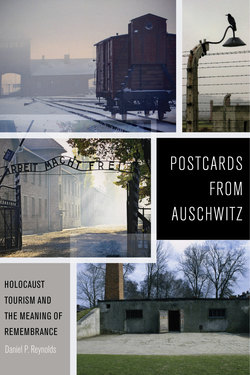Читать книгу Postcards from Auschwitz - Daniel P. Reynolds - Страница 6
На сайте Литреса книга снята с продажи.
ОглавлениеPREFACE AND ACKNOWLEDGMENTS
The first concentration camp memorial I ever visited was Breendonk, just north of Brussels, Belgium, where my family lived for several years while my father, a U.S. Army officer, was stationed at NATO headquarters. The occasion was a field trip consisting of about fifty high schoolers and was part of our curriculum on World War II. Breendonk, built in 1909, had been a Belgian fort; in 1940 the SS took it over during the Nazi occupation of Belgium. Built entirely of concrete, the camp was remarkably well preserved—and perhaps the most frightening, cruelest place I had ever seen. The visit impressed the reality of brutality upon me in a way that exceeded my teenage imagination’s efforts to comprehend the Third Reich’s mass murders through history textbooks or the recently aired television miniseries, Holocaust. Our tour was led by a former prisoner who stressed quite emphatically that the camp held captive not only Jews (though Jews did constitute half of the camp’s inmates) but also political prisoners such as himself. I remember being struck by the remark, not only because it departed from my exclusive association of concentration camps with Jewish victims but also, perhaps more important, because I thought I detected resentment toward the Nazis’ most numerous victims. Whether I understood the guide’s sentiments correctly or not, it had never occurred to me that victims might not be united in their suffering, and this impression troubled my idealistic assumption that something positive and harmonious could emerge from the calamity of Nazi terror.
Over the last decade, well after my only prior experience of a concentration camp site, I have toured other camp memorials in Germany, Austria, the Czech Republic, Poland, and France. Yet, at least superficially, the circumstances of these recent tours have not been so different from that of the high school field trip. The thirty intervening years have allowed for deeper preparation, greater agency in my participation, and a richer educational context, but one constant throughout the visits has been a sense of dislocation, experienced as uncertainty about the right way to be—or even whether to be—at these sites. Is speaking at such places appropriate? Photography? I have felt compelled to consider my relationship to a space deemed sacred and to ask whether tourism is an intrusion of the profane. Often it has been the other tourists who have prompted introspection, either by the way the visit visibly affected them or by the behavior of some I found disruptive: people laughing, posing for pictures, or otherwise showing less deference than I assumed appropriate, leaving me to wonder if or how I should respond. In the end, I have always left these tours with the desire to learn more about what I have seen and even to return. This book is an effort to account for that dynamic of dislocation and increased curiosity in my experiences as a tourist.
I am grateful to many people and agencies for their support of this project and their continued encouragement. The research for this book was supported by a grant from the National Endowment for the Humanities, whose advocacy for scholarship in many fields outside the sciences is a vital national resource. I would also like to acknowledge Grinnell College’s sustained support of my research through travel grants and time to complete the work. I am grateful to Jennifer Hammer, Dorothea Halliday, and Amy Klopfenstein at New York University Press for their encouragement and feedback and for ushering the book through the publication process. I have many colleagues at Grinnell College to thank, especially David Cook-Martin, Karla Erickson, and Astrid Henry, who offered their critical acumen and their valuable time to support this work at many stages. I am also grateful to my colleagues Jenny Anger, Todd Armstrong, and David Harrison, who took an interest in the work and who each organized and participated in some of the travels and conversations that shaped it. Valerie Benoist also read portions of the project and offered her helpful insight. I’d also like to thank Carolyn Dean, Torben Jorgensen, Thomas Pegelow Kaplan, Desmond Wee, and Stephan Sonnenburg for valuable feedback and opportunities to further develop the research. I thank Konstanty Gebert for enriching my thinking about Polish efforts to remember the Holocaust. Hanna Červinková and Juliet Golden at the University of Lower Silesia organized an especially valuable trip to the Auschwitz-Birkenau Memorial and Museum in 2016. I am grateful to Ian Stout and Luc Janssen for their editorial contributions and to my students, both past and present, who have sharpened my thinking about the subject of this book.
Locally, I am grateful to Mark Finkelstein of the Jewish Federation of Greater Des Moines, Rabbi David Kaufmann, Stephen Gaies at the University of Northern Iowa’s Center for Holocaust and Genocide Education, and Elke Heckner at the University of Iowa for opportunities to share this work.
I would especially like to acknowledge Pamela Lalonde and Pepe Avila, who provided needed companionship, conversation, and considerable car mileage to join me on trips to some of Europe’s most haunting and remote memorials. Thank you!
Finally, I would like to thank my family: my parents, Patricia and Regis, my sisters, Julie and Jennifer, and my spouse, Garrett, all of whom have been travel companions at various times to the sites explored here but, more important, who have been a constant source of support. This book is dedicated to them.
